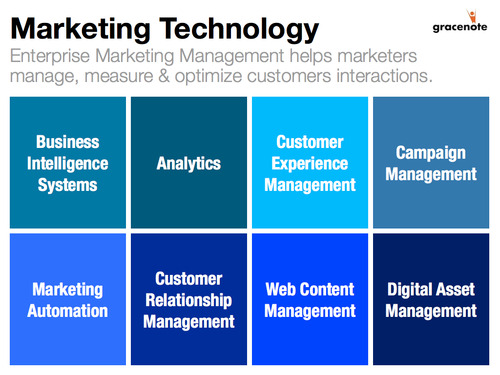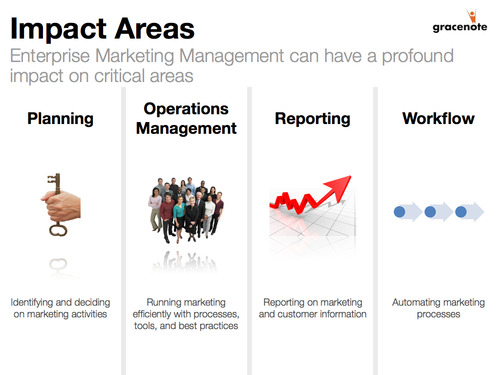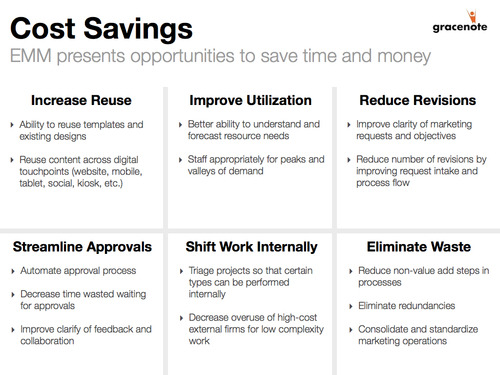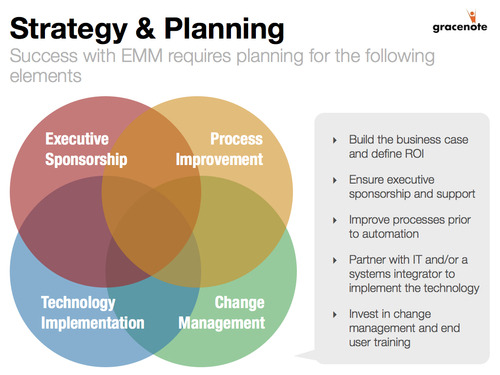Why now is the time to define your Enterprise Marketing Management strategy and how to define the ROI of EMM investments
In part 1 of Adventures in Enterprise Marketing Management, we explored changes in consumer behavior and expectations, defined Enterprise Marketing Management (EMM) and discussed some of the primary benefits of EMM.
In this post, we’ll cover why now is the right time to define your EMM strategy and how to build a business case for the investment. EMM helps marketers manage, measure, and optimize customer interactions and includes the technology components illustrated below. EMM leads to both cost savings as well as to an improved ability to manage an increasingly complex marketing environment.

The Right Time? Right Now
Now is the right time for any large organization to invest in EMM if it has not done so already. There are several good reasons for this.
Marketers are under intense pressure to deliver measurable results in an environment that is complex and rapidly changing. The consumer is now always connected—across multiple devices and forms of interaction. Marketing today means connecting with the consumer where they are and when it is most convenient for them. Marketers can no longer rely on disconnected messaging across multiple channels
The resulting complexity of this environment can be managed much better and much more consistently with the help of EMM. And, EMM allows marketers to measure the results across channels and get the most out of every marketing dollar. The diagram below lists the critical areas that can benefit from EMM.

In most organizations, almost all business functions have been optimized and made more efficient. The mandate for cost savings and ongoing continuos improvement has existed for years. Many of these functions have reduced waste, shortened cycle times, improved quality and lowered costs. While there is always room for improvement, these functions have become efficient, well-managed processes.
Not so with many marketing functions. The creative nature of marketing has led many to believe that operational efficiencies can’t be gained there. However, evidence from many organizations proves that they can indeed. The diagram below lists some of the ways that companies can save money by implementing an EMM. Estimating these cost savings is the first step to making a business case for EMM and estimating ROI.

Success with EMM requires companies to develop a strategy and plan. When building your plan for EMM consider the elements outlined below. Like any major business initiative, executive sponsorship and support is critical. By taking the time to make a strong case and building executive buy-in, leaders can begin the EMM implementation path that will ultimately benefit themselves, their organizations and, most importantly, their customers in the years to come.

“In the world we live in today, which Forrester defines as the Age of the Customer, firms need to look at how they deliver marketing and technology solutions that have visible impact on the customer.” – David Cooperstein, Vice President and Practice Leader, Forrester



